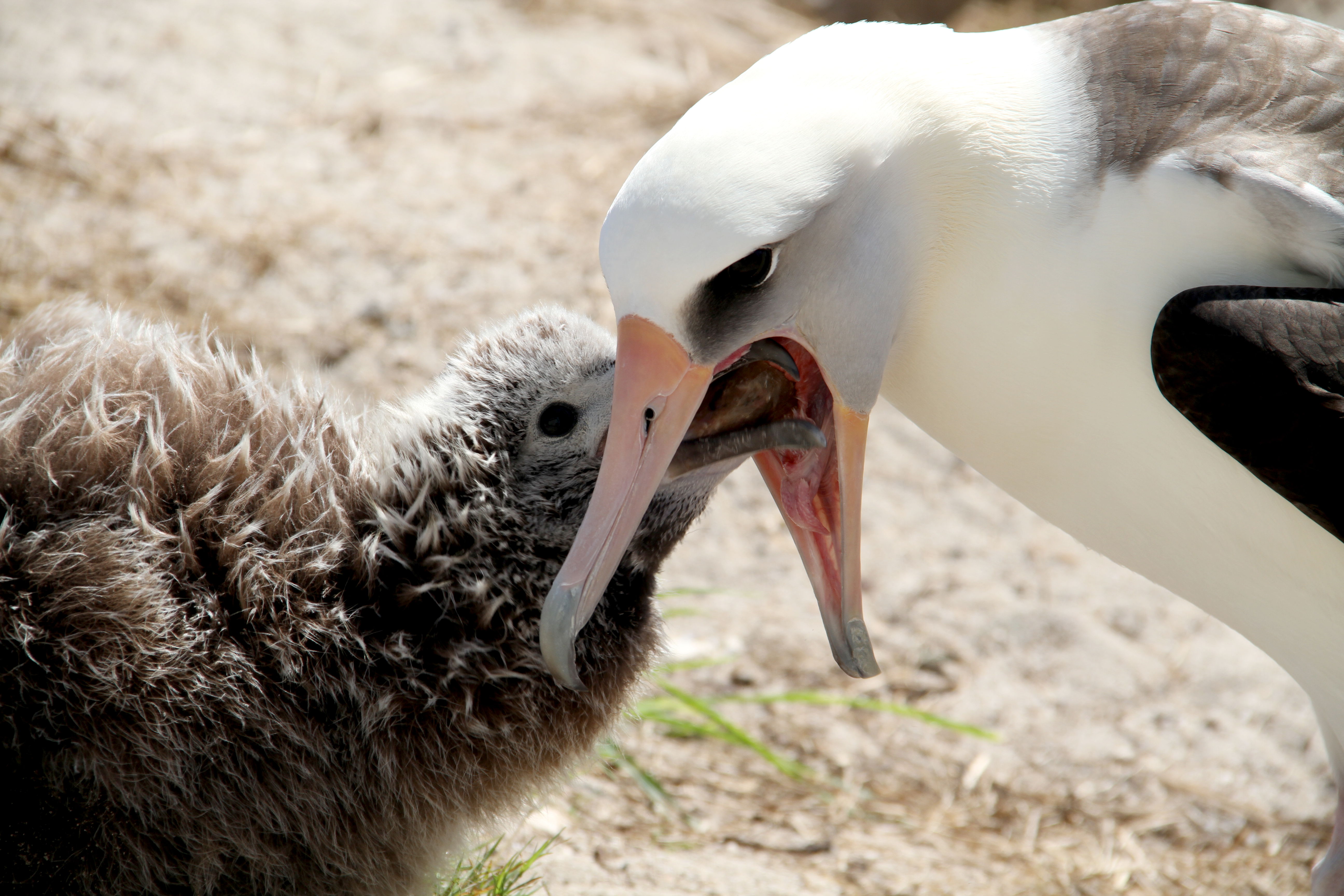 A Laysan Albatross feeds its chick; photograph by Pete Leary
A Laysan Albatross feeds its chick; photograph by Pete Leary
Morgan Gilmour (U.S. Geological Survey, Western Ecological Research Center, California, USA) and colleagues have published open access in Marine Ecology Progress Series (MEPS) on foraging patterns in chick-provisioning Laysan Albatrosses under varying environmental conditions.
The paper’s abstract follows:
“Animals that regularly traverse habitat extremes between the subtropics and subarctic are expected to exhibit foraging behaviors that respond to changes in dynamic ocean habitats, and these behaviors may facilitate adaptations to novel and changing climates. During the chick-provisioning stage, Laysan albatross Phoebastria immutabilis parents regularly undertake short- and long-distance foraging trips throughout the vast central North Pacific Ocean. We examined GPS tracking data among chick-provisioning albatrosses in Hawai‘i to characterize habitats during short- and long-distance trips. The study period encompassed a marine heatwave (2014) and the cooling period after an extreme El Niño event (2016), enabling us to examine foraging habitats under novel and changing climates. First passage time and generalized additive mixed models indicated that during 183 short and 110 long trips (n = 32 birds), wind-assisted flight efficiency, proximity to productive areas, and moonlit-searching were important in both subtropical and subarctic habitats. Laysan albatross took foraging trips that had similar lengths and durations in 2014 and 2016 and visited similar areas, indicating that their foraging range did not expand in response to climatic variability. A strategy that uses similar foraging areas across years combined with reliance on environmental processes that enhance flight efficiency (wind) and that enable searching behaviors (moonlight) indicate that Laysan albatross exhibit complex behavioral plasticity that allows them to utilize subtropical and subarctic habitats affected by dynamic climate variability. This strategy may benefit their ability to respond to oceanographic and climatic change, including expanding warm water regions and changing atmospheric conditions influenced by global warming.”
REFERENCE
Gilmour M.E., Felis J, Hester M., Young L., Adams J. (2022) Laysan albatross exhibit complex behavioral plasticity in the subtropical and subarctic North Pacific Ocean. Marine Ecology Progress Series 697:125-147. https://doi.org/10.3354/meps14148
13 October 2022

 English
English  Français
Français  Español
Español